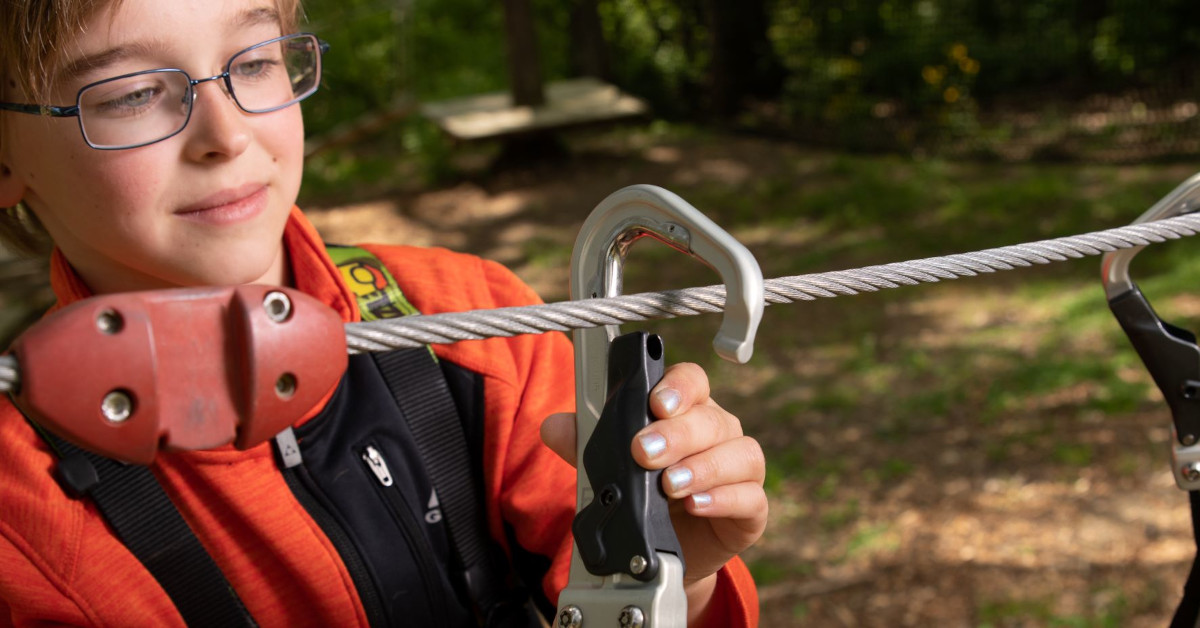
In order to lessen the possibility of unintentional detachments from a safety system, smart belays typically consist of a pair of twin safety lanyards with communication connectors. Throughout the whole course, Continuous Belays stay connected to the life safety system. Both of those tasks can be completed via LockD Clips.
A clever continuous belay system called LockD Clips. Different ways are possible for its features to reduce danger. If the system is built and installed by a qualified individual, LockD Clips can be used with rolling elements and auto belay devices as long as they comply with the authority’s criteria.
How to Install and Use LockD Clips with Auto Belays for Rolling, Ascending, and Descending Elements
A continuous and intelligent belay system can reduce risk, boost capacity, and cut down on the number of staff members needed to staff an adventure course. LockD Clips are simple to integrate into both new and current courses, featuring auto belays for the use of rolling, horizontal, and vertical (moving) elements.
This article provides information to qualified individuals who are developing or retrofitting a course with LockD Clips that interact with an auto belay on an ascending, descending, or rolling element. Both LockD Clips and auto belays have specific requirements.
LockD Clips as the Primary vs Secondary Connector
When implementing LockD Clips in conjunction with auto belay or rolling element an important decision must be made during the design: will LockD Clips act as the primary or secondary connector when attached to the element?
Primary Connector
Using LockD Clips as the primary connector means LockD Clips will be in series with the auto belay or element connected by a Tweezle O (closed loop key). LockD Clips will be in tension during ascent or descent.
When LockD Clips is used as the primary connector, a secondary, unloaded attachment may be implemented if needed.
-
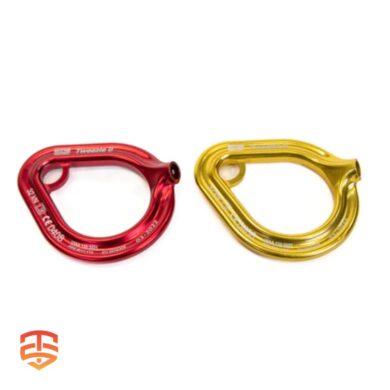 Tweezle O for LockD Clips€ 76,00 Ex VAT
Tweezle O for LockD Clips€ 76,00 Ex VAT -
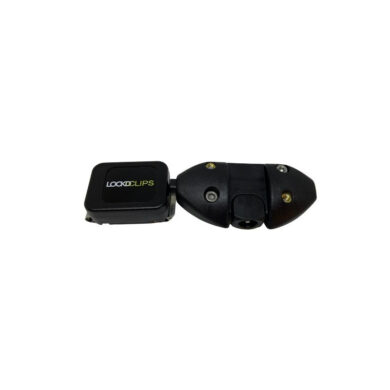 Rescue Tweezle | for LockD Clips€ 36,00 Ex VAT
Rescue Tweezle | for LockD Clips€ 36,00 Ex VAT -
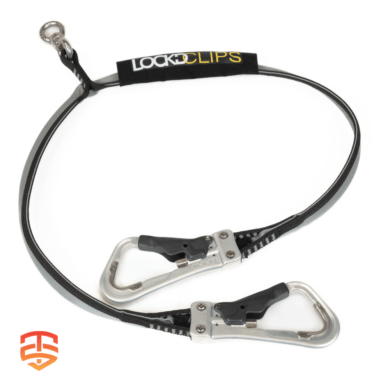 LockD Clips Swivel | Continuous Self-Belay€ 389,00 Ex VAT
LockD Clips Swivel | Continuous Self-Belay€ 389,00 Ex VAT
Secondary Connector
Using LockD Clips as the secondary connector means LockD Clips will be connected to the auto belay or element but will not be under tension during use.
Instead, a suitable life safety carabiner or connector, will be the primary connector and hold the weight of the participant during use. When installed as a secondary connector, Tweezle O should only be loaded in the
event of an improper attachment to the primary carabiner or connector. In activities where shock loads can occur, like jumping off a platform, this is the preferred method of attachment.
LockD Clips as the Primary Connector: Possible Installation
LockD Clips’ closed loop key for special elements is the Tweezle O. This key should be used when connecting to auto belays or special elements and installed by a qualified person.
LockD Clips’ closed loop key for special elements is the Tweezle O. This key should be used when connecting to auto belays or special elements and installed by a qualified person.
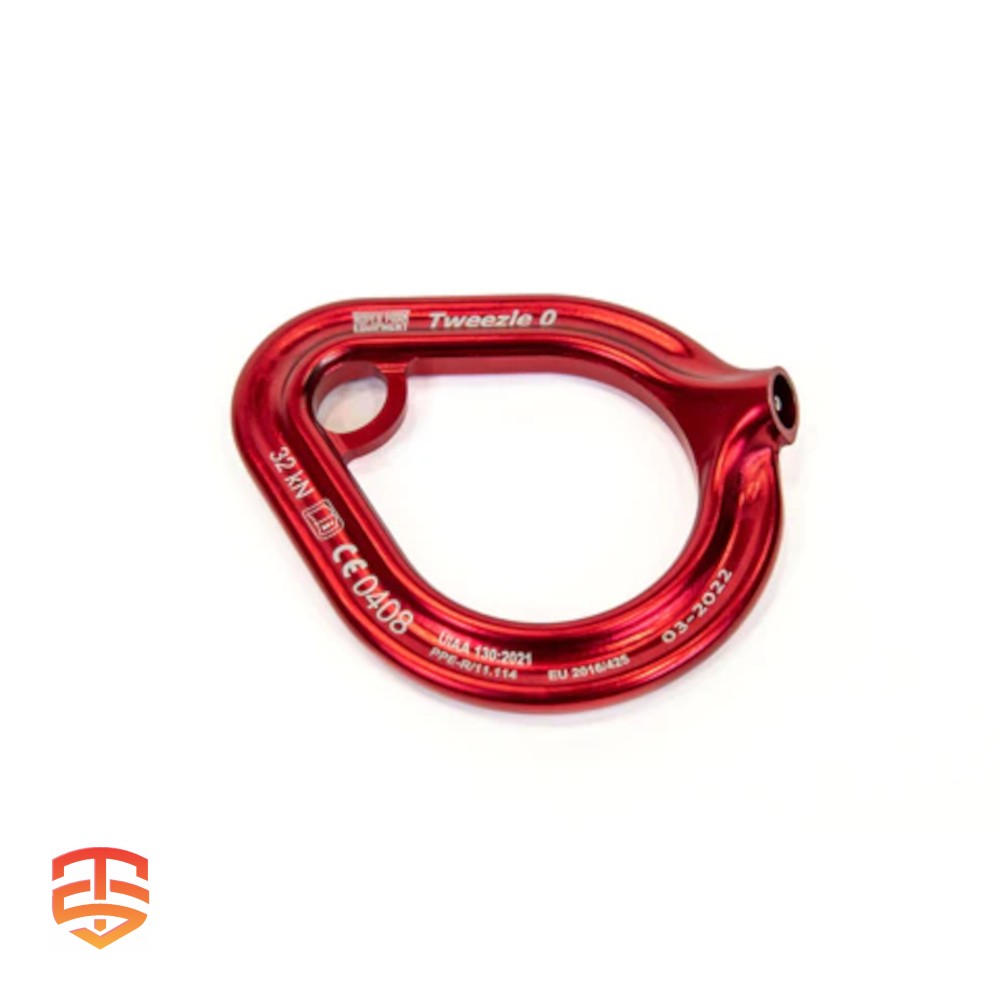
Connect the Tweezle O to the auto belay or rolling element with a suitably life safety rated connector that cannot be removed by a participant.
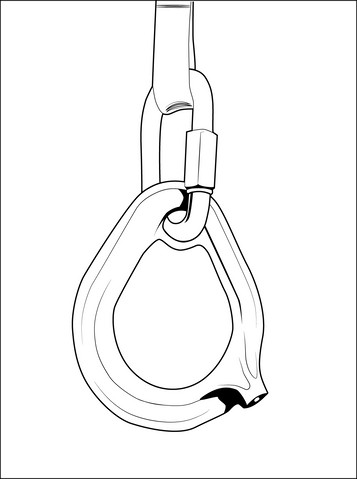
Operation
1. Participant connects themselves directly to the Tweezle O.
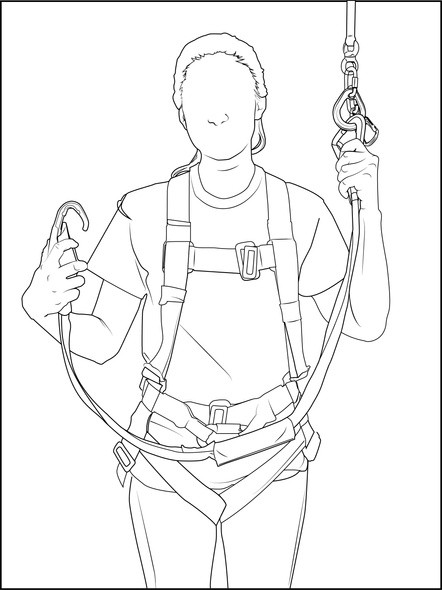
2. LockD Clips is the primary attachment to the element.
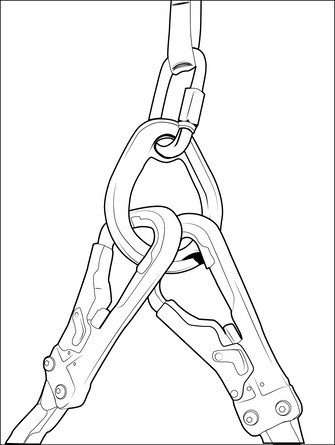
3. The participant must not be able to descend or ascend the element unless they’re suitably attached to the system.
4. Once the participant reaches the end of the element, LockD Clips can be transitioned to a suitable life safety line with use of a Tweezle Key, allowing the participant to detach from the special element.
Considerations
Ascending Element
- Ensure the auto belay has adequate retraction strength to appropriately retract the webbing with the Tweezle O and LockD Clips attached.
- Ensure ascent starts from the ground or suitably large platform to ensure adequate landing area in case the participant activates the auto belay function and returns back to the start of ascent.
Descending Element
Ensure the auto belay is mounted high enough to eliminate slack in the system with the added length of LockD Clips. If unaccounted for, the slack can result in a jolt during initial descent and cause the connectors to collide with the participant. Additionally:
- LockD Clips can be used as the secondary connector to ensure the connectors cannot collide with a participant during descent.
- If impact loading is possible within the system, use LockD Clips as the secondary connection.
- Ensure participants cannot become entangled in the LockD Clips during descent.
- Never permit the webbing line to wrap around legs, arms, neck, or other body parts, or loose clothing.
- Prior to descent, ensure path and landing areas are large enough, free of people and obstructions.
LockD Clips as the Secondary Connector
Installation
Below are images of the Tweezle O connected to a system as a secondary connection.
A qualified person must design and install the system to ensure large enough take-off and landing areas, compatibility with all systems, and proper function of the devices in use.
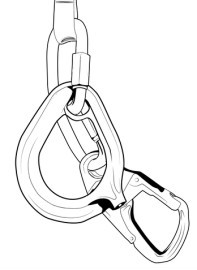
Operation
1. Participant connects themselves directly to the Tweezle O.
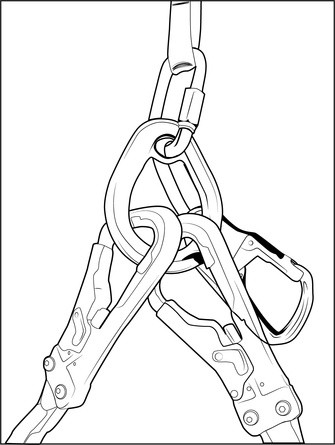
2. Participants then connect the Primary connector to the harness’s main attachment point.
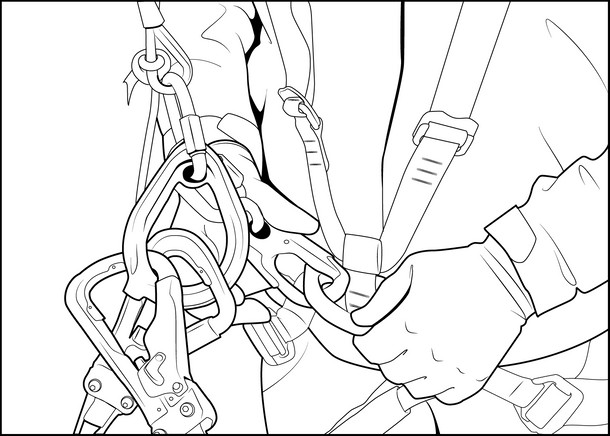
3. LockD Clips is the secondary attachment to the system and should not be under tension during ascent or descent.
4. The participant must not be able to descend or ascend the element unless they’re suitably attached to the system.
5. Once the participant reaches the end of the element, LockD Clips can be transitioned to a suitable life safety line with use of a Tweezle Key, allowing the participant to detach from the special element.
Considerations
Descending and Ascending Elements
If the secondary attachment is engaged, due to an improper primary attachment, the added length of LockD Clips lanyard may create slack in the system. The slack can result in a jolt during initial descent and may cause the connectors to collide with the participant.
- To combat this the auto belay should be mounted such that the lanyard is in tension prior to the primary connector being attached to the harness.
- Ensure participants are suitably trained on how to properly connect the primary connector.
- Ensure participants cannot become entangled in LockD Clips during descent.
- Never permit the webbing line to wrap around legs, arms, neck or other body parts or loose clothing of the participant.
- Ensure participants hands are free and clear of connectors during descent. Loading may cause a pinch hazard.
- Prior to descent, ensure descent path and landing area are free of people and obstructions.
- Instruct participant to always descend feet first and straight down using feet to fend off obstacles and prepare for landing.
LockD Clips Explained
The most sophisticated integrated carabiner system is LockD Clips, which is used in the adventure recreation sector. The LockD Clips system, which represents the next step in the advancement of “always locked” smart belay systems, was created with the operators and users of adventure recreation in mind.
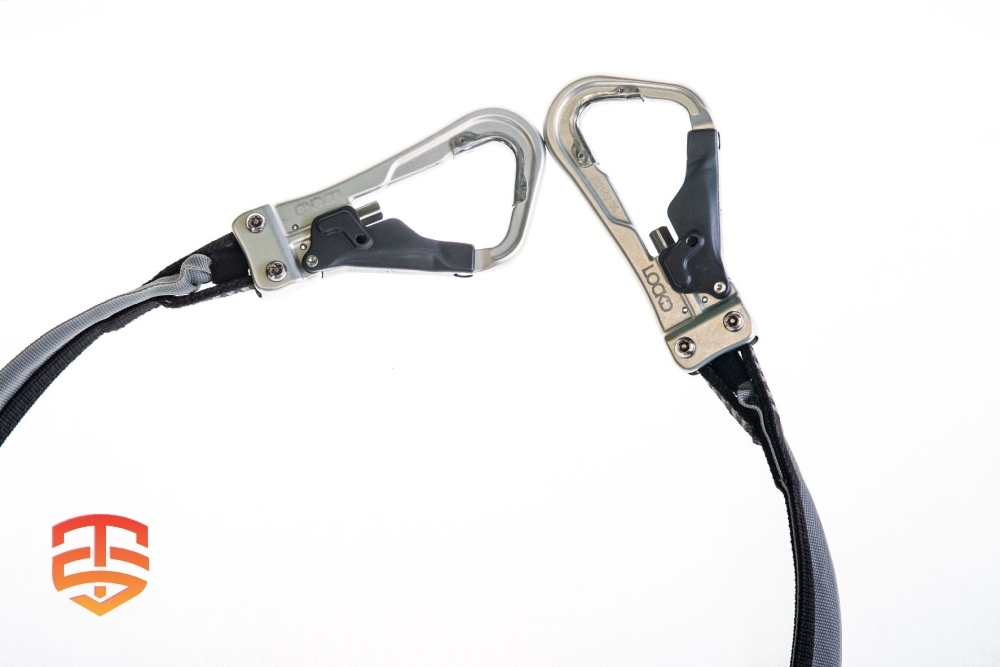
Better for Climbers
- Streamlined clip design: Climbers will appreciate the design, which is light and easy to operate
- Made for small and large hands alike: A slenderized carabiner fits easily into any size hand, from child to adult.
- Ideal for first time climbers…and pros: The design is so simple that there is virtually no learning curve for first time-climbers. But even your most experienced climbers and staff will enjoy the climbing experience too.
- Expands the age range for course use: Children as young as 6 years old may use LockD Clips on your course without an accompanying adult, as the system meets requirements EN15567 Type D and EN 17109 Type D.
Better for Operators
- Minimized wearing parts: Get greater reliability and longevity from your equipment. We provide a 3 year warranty on non-wearing parts.
- Onsite maintenance and annual inspection: Inspection can be done locally as part of your normal annual course inspection process. Many repairs are extremely simple and can be done in the field as well.
- Reduced annual inspection costs: With annual third party inspection handled onsite by a qualified PPE inspector, there is minimal out of service time and no shipping costs.
- Seamless integration: The LockD Clips system integrates seamlessly into existing SSB courses, so clips can be upgraded all at once or over time as your SSB clips are retired.
-
 Tweezle O for LockD Clips€ 76,00 Ex VAT
Tweezle O for LockD Clips€ 76,00 Ex VAT -
 Rescue Tweezle | for LockD Clips€ 36,00 Ex VAT
Rescue Tweezle | for LockD Clips€ 36,00 Ex VAT -
 LockD Clips Swivel | Continuous Self-Belay€ 389,00 Ex VAT
LockD Clips Swivel | Continuous Self-Belay€ 389,00 Ex VAT
Ascend to New Heights: Expert Insights on Ropes Course Technology
Ropes courses offer exhilarating challenges and unforgettable experiences. This article explores the core technology behind them. But to truly scale the heights of knowledge, check out our additional resources featuring expert opinions on the latest advancements and best practices in ropes course design and operation.
- Aerial Safety: Exploring High Ropes Course Belay Systems
- Safe Ropes Course Adventures
- Harnessing Innovation: Next-Generation PPE for Adventure Parks
- Why Keyed Smart Belay Systems Reduce Costs
- Exploring High Ropes Course Belay Systems
- Advanced Rescue Devices in Aerial Adventure Courses
- Top Picks for Best Ropes Course Equipment Season 2023
- Smart Belay for Authentic Climbing Experience
- Edelrid Novelties: Highlights High work and tree care
- Using LockD Clips with Vertical Auto Belays
- Considerations when designing ropes courses and adventure parks?
- Choosing the right Belay System
- Continuous Belay for Ropes Courses
- Ropes Course Rescue Innovations
-
 LockD Clips Swivel | Continuous Self-Belay€ 389,00 Ex VAT
LockD Clips Swivel | Continuous Self-Belay€ 389,00 Ex VAT -
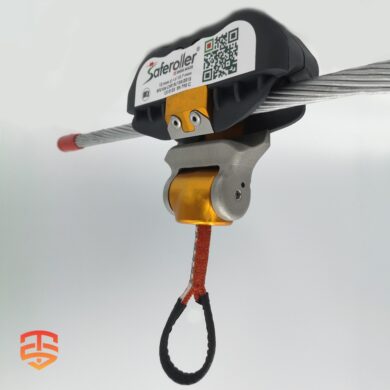 Saferoller Trolley V3 (PPE)€ 240,00 – € 252,00 Ex VAT
Saferoller Trolley V3 (PPE)€ 240,00 – € 252,00 Ex VAT -
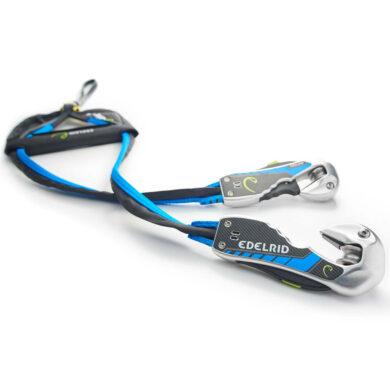 Edelrid Smart Belay X | Magnetic Locking Mechanism€ 544,00 – € 623,00 Ex VAT
Edelrid Smart Belay X | Magnetic Locking Mechanism€ 544,00 – € 623,00 Ex VAT







